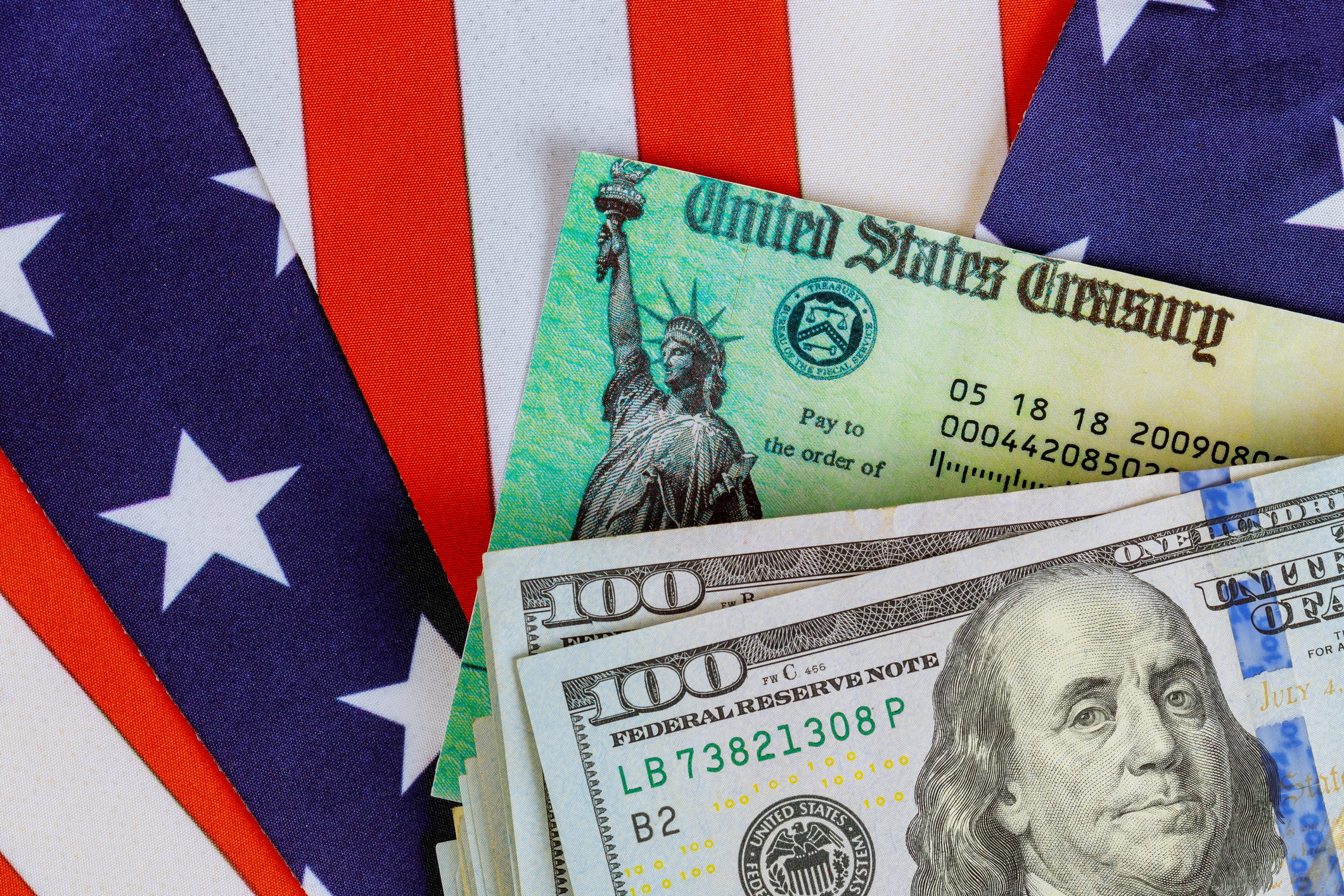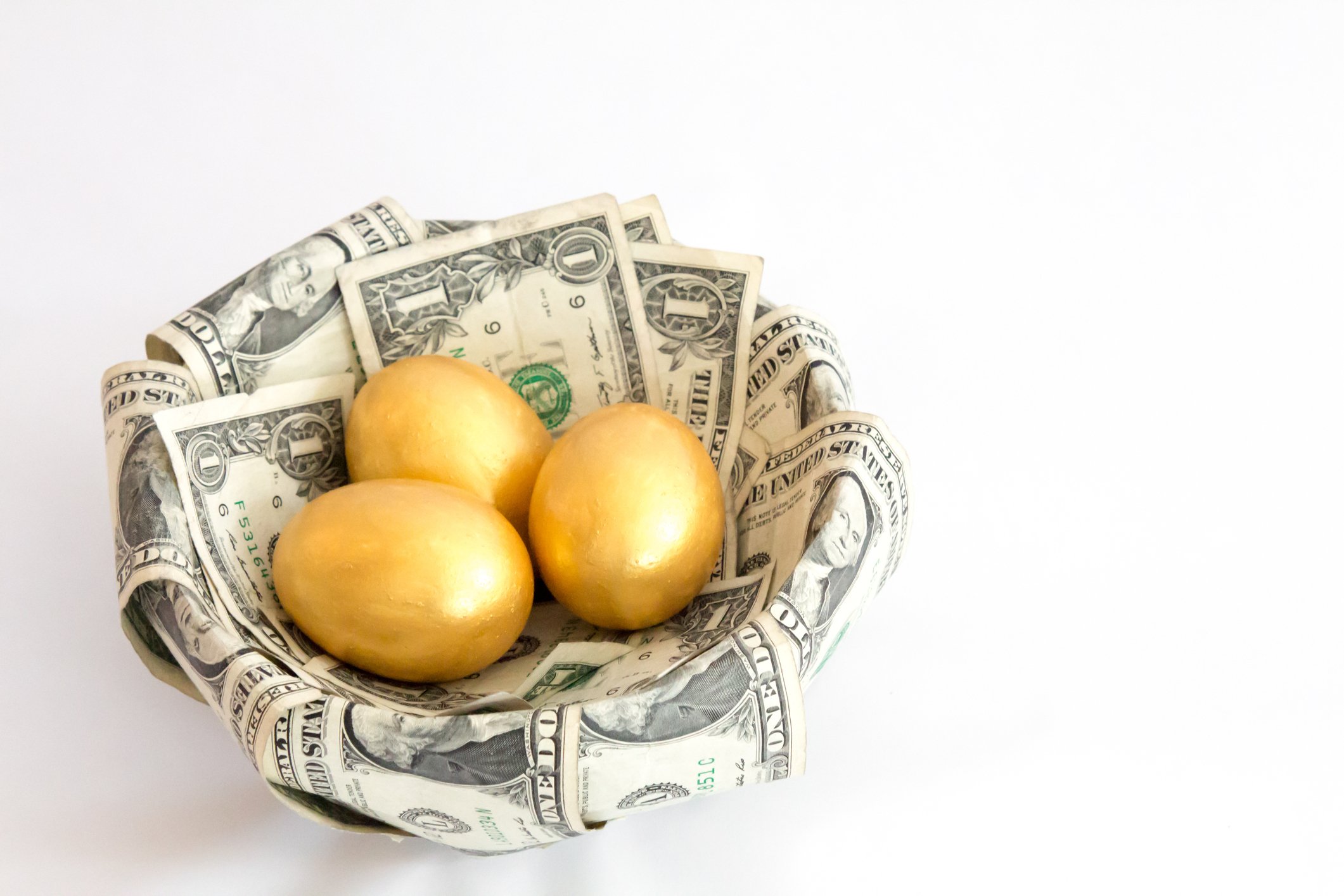Unprecedented times have called for unprecedented measures. That's why congress passed, and President Trump signed, the Coronavirus Aid, Relief, and Economic Security (CARES) Act into law on March 27. This record $2.2 trillion stimulus package is in direct response to the never-before-seen economic and labor disruption caused by the proliferation of the coronavirus disease 2019 (COVID-19).
While the CARES Act lays out a number of key initiatives, such as supplying $500 billion to distressed industries, nearly $350 billion for small business loans, and $260 billion to expand the unemployment benefits program, it's the $300 billion set aside for direct stimulus payouts to American workers and seniors that's garnering all the attention.

Image source: Getty Images.
It's time to put your stimulus check to work
These stimulus payments, officially known as Economic Impact Payments, can total as much as $1,200 per individual taxpayer, or $2,400 for a married couple filing jointly. Households with qualifying children aged 16 and under can also receive $500 per child. Thus, a married couple with two young children may receive as much as $3,400 in stimulus from the CARES Act.
Of course, not everyone will be participating in the largest stimulus package in history. High-income earners, adult-age dependents (which includes senior citizens), non-citizens without a clear pathway to citizenship, those who owe child support, and even some folks who owe money to their bank, may not receive a stimulus check.
But with the majority of households netting a payout, the big question now is what to do with these Economic Impact Payments when they arrive, which for potentially 80 million Americans was last week.
For some folks, buying food and household goods, paying utility bills, or bolstering an emergency fund is going to be the smart move. But for those people who have an adequate emergency fund, investing their stimulus payout might be best.
Considering how volatile the stock market has been of late, I can certainly understand investors' apprehension toward putting money to work in individual stocks. That's why exchange-traded funds (ETFs) might be the smart way to go. ETFs allow investors to buy baskets of stocks in a single security, which can provide instant diversification with the click of a button. If you have a hearty stimulus check headed your way, here are the best ETFs to consider buying with your payout.

Image source: Getty Images.
ProShares S&P 500 Dividend Aristocrats ETF
To begin with, investors should give serious consideration to the ProShares S&P 500 Dividend Arisotocrats ETF (NOBL 0.81%). The reason is simple: Dividend stocks outperform non-dividend stocks over the long run, and this ETF is packed with the most elite dividend stocks in existence.
According to a 2013 report from J.P. Morgan Asset Management, publicly traded companies that initiated and grew their payouts between 1972 and 2012 delivered an average annual return of 9.5% over this 40-year period. Comparatively, non-dividend stocks returned a meager 1.6% over this same period. That's a nearly 500% better annualized average return.
What makes the ProShares S&P 500 Dividend Aristocrats ETF so special is that it's focused on S&P 500-listed companies that have raised their payout 25 or more consecutive years (i.e. Dividend Aristocrats). That means these nearly five-dozen businesses are time-tested and well-suited to expand over the long run.
Current investors can expect a nearly 2.7% yield with this ETF and an annual expense ratio of 0.35%.

Image source: Getty Images.
VanEck Vectors Pharmaceutical ETF
This recent downturn in the stock market has shown how valuable it can be to own drug developers in your portfolio. That's why smart investors will consider using their $1,200 stimulus check to buy the VanEck Vectors Pharmaceutical ETF (PPH 0.58%), which owns a piece of 25 of the largest pharmaceutical and distribution companies in the world.
The broad stroke thesis here is that healthcare, and more specifically drugmakers, are relative immune to economic downturns. Although some clinical development has been slowed by the proliferation of COVID-19, the idea here is that people who needed medicine last month are still going to need pharmaceutical drugs in April and beyond. People don't stop getting sick just because the economy weakens, which provides a steady stream of predictable cash flow to drugmakers.
Additionally, the forward P/E ratio for S&P 500 pharmaceutical stocks recently bounced off of its lowest level in seven years. There's definitely value to be had among drugmakers, which makes the VanEck Vectors Pharmaceutical ETF and its 2.1% yield worth a much closer look.

Image source: Getty Images.
Vanguard Value Index ETF
Keeping with the theme of broad view theses, focusing on value stocks would probably be a smart consideration for stimulus check recipients looking to invest their money. That's why the Vanguard Value Index ETF (VTV 0.72%) may be worth buying.
In 2016, Bank of America/Merrill Lynch released a report that examined the performance of growth stocks versus value stocks over a 90-year period (1926 – 2015). For the record, investors would have been happy owning either. However, value stocks averaged an annualized return of 17%, compared to "just" 12.6% annually for growth stocks over the 90-year time frame. Even though growth stocks have been in favor since the Great Recession, value stocks have historically outperformed. That makes them a smart bet for investors.
Furthermore, Vanguard ETFs have a history of doing right by investors with very low expenses, and the Vanguard Value Index ETF is no different. Since the Vanguard Value Index ETF seeks to track the performance of the CRSP U.S. Large Cap Value Index, which itself has little turnover, the annual expense ratio investors are liable for is a microscopic 0.04%.

Image source: Getty Images.
VanEck Vectors Gold Miners ETF
Lastly, investors with a higher tolerance for risk might want to use their $1,200 stimulus check to buy the VanEck Vectors Gold Miners ETF (GDX 1.23%).
Although physical gold has widely underperformed the returns of stocks over the long run, there's probably not been a more perfect setup for the lustrous yellow metal in a long time. Global bonds yields are extremely low, thereby providing few avenues to generate a guaranteed return, while at the same time we're seeing central banks around the globe flood their respective countries with capital. This is a recipe for gold to thrive.
But what makes the VanEck Vectors Gold Miners ETF the preferred choice is that it focuses on the mining stocks pulling gold out of the ground, and not just on physical gold. Since mining companies can adjust their costs and production to match prevailing market conditions, as well as pay a dividend (something physical gold does not do), the gains that can be had in gold-mining stocks can be magnified many times over relative to the underlying shiny yellow metal.




